A group of experts in culinary industry were invited by BBC Good Food website to predict new culinary and gastronomy trends in 2017 which have global influences.
How
the majority is going to do grocery shopping, cooking, and eating in the
upcoming days? According to those experts, main new trends are described as
following.
Absolutely no waste
The
1st trend is to use up all ingredients. In other words, cooks would minimize
the waste of ingredients during cooking process. There are some pioneers that
lead the trends, such as a restaurant named Silo in Brighton, a coastal city
where is one hour driving away from London, England. Silo is the very first
restaurant in the world that has not wasted anything from ingredients during
business cooking process.
This
trend is totally in the contrary with the fact that restaurants are the biggest
industry of wasting. To make it happen, Silo restaurant has replaced modern
techniques by traditional methods and organic ingredients. For examples, Silo’s
cakes are made from 100% organic flour, and cream is from organic milk, which
is originally from pasture breeding cows.

Jenny Dawson and Rubies in the Rubble jams, which were made from wasted fruits.
In
the similarity, some factories have been maximizing their ingredients’ usage,
like Rubies in the Rubble in England. It’s specialized in processed food as
jams, dipping, and sauces from wasted fruits that are not qualified to be
displayed and sold in stores. Ms Jenny Dawson, the company’s founder, had come
up with that idea when she was walking through produce markets in London. The
idea is to use up all wasted fruits and vegetables, which are not nice looking
but still good and fresh, like mangoes, blueberries, tomatoes, or peppers and
process them to canned products. Rubies in the Rubble products are very popular
in England and many other countries because they’re quite affordable yet as
qualified as other ranged brands.
Following social
networks
In
2016, a national-wide survey in England of BBC Good Food showed that there is
40% the Millennial generation (a term to define people from age 18 – 35,
freshman/ graduated/employed, who had grown up with social networks) that
always post what they have had or what they have cooked on social networks as
Facebook, Twitter, and Instagram. Catching this trend, restaurants and food
companies have created catchy products, such as rainbow baguette, black
hamburger, or seaweed coffee, which are weird or fancy looking to attract the
Millennial generation.
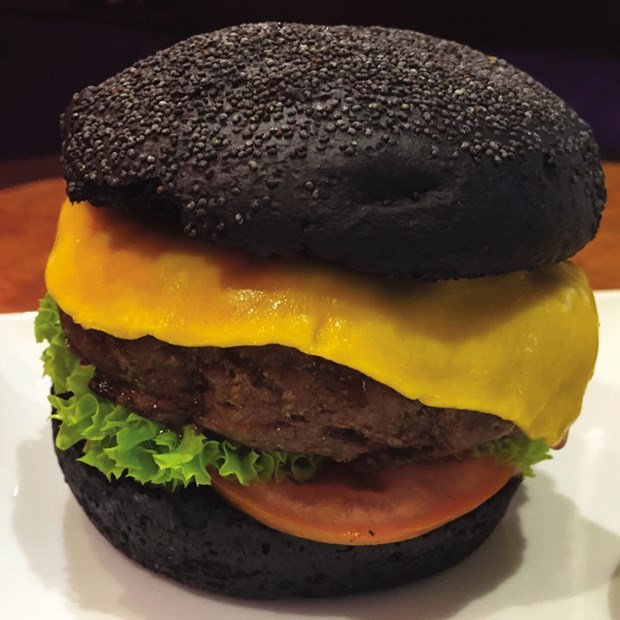
New favorite black hamburgers
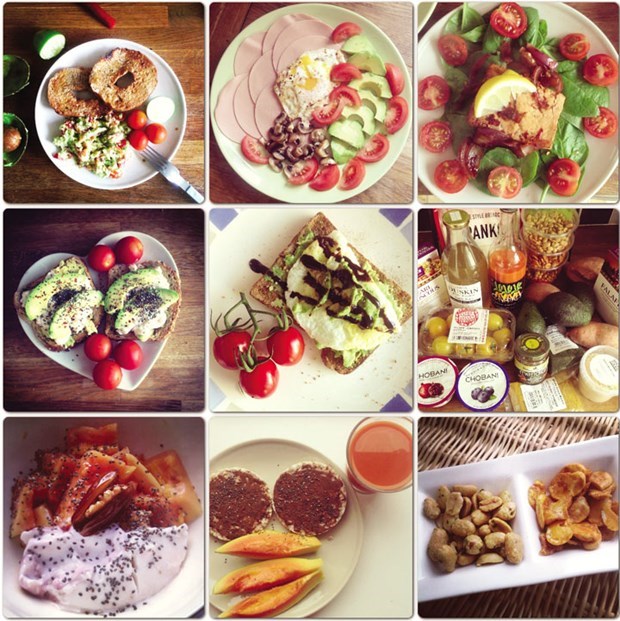
Good food posted on Instagram.
Smart techniques in
the kitchen
Smart
pans which can help to cook diverse dishes because of its connection to smart
phones are an example of modern kitchen techniques. Other examples are tea
maker called Totali-Tea which can calculate the amount of teas, brew, and press
(both tea leaves or tea bags) to make the best cup of tea; the Coravin wine
preserver system which allows users to suck wine out of bottles with no needs
of opening the corks; or IKAWA coffee toasters controlled by iPad.
Alcohol-free drinks
Recently
socialistic researches have revealed that Z generation (a term to define people
who were born after 1995, estimating about 2 billions of the world population)
drinks less beer and wine than older generation and they evaluate quality of
canned drinks through daily drinks. They predicted that non-alcohol drinks
would dominate the market next year, especially healthy nourishing drinks, such
as activated carbon-filtered pure water or cold-pressed juice (refers to juice
that uses a hydraulic press to extract juice from fruits and vegetables, in
order to preserve the whole purity and nutrition from produce).
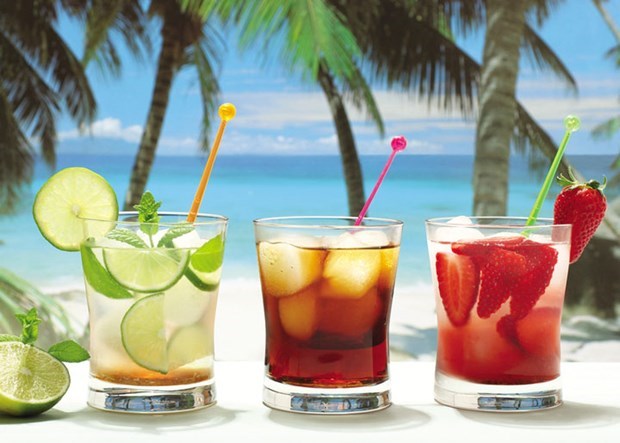
Mocktail – non-alcohol mixture drinks are popular choice of Z generation.
Besides,
there are several types of non-alcohol wines, such as Seedlip, which is
distilled from six kinds of plants around the world, or mocktail - concocted
cocktails without alcohol background coloring and flavoring addictive. Usually,
they just use fresh fruits, fresh milk, tea, coffee, eggnog, or canned drinks
to mix.
To have seaweed
In
recent years, the planet has witnessed the outburst of vegetarian cuisine or
vegan (absolutely no use of animal products like eggs or leather). The needs of
vegetable has been significantly increasing so much that can lead to green
ingredients’ shortage. Therefore, an enormous green source has been farmed,
raised, and exploited from the oceans, which is seaweed. This clean type of
vegetables is also the alternative of sea salt and other ingredients. Japan is
the very first country where popularly uses seaweed in daily meals and this
trend is expanding to the entire world.
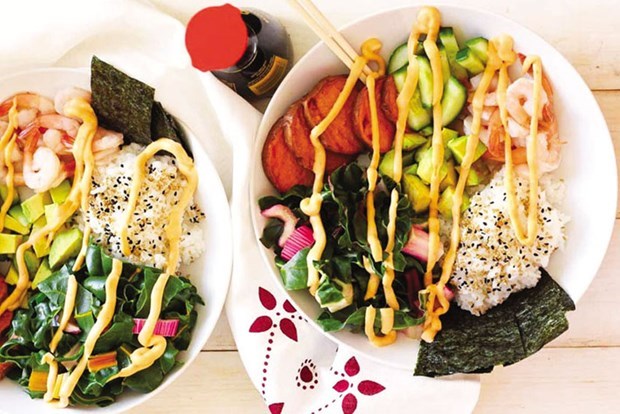
Seaweed (nori) is in daily meals of the Japanese and expanding to the world.
Nowadays,
nori can be found in most food stores and supermarkets in all over the world.
Seaweed is used to make sushi, ramen noodles, salads, or simply cooked with
rice. The most common type of seaweed that we can find is dried, pressed in
thin squares. Seaweed contains high nutrition and vitamin and its protein is
much higher than wheat’s so it’s perfectly great for vegetarian.
Pickled food and
fermented drinks
New
culinary trends also honors gut-healthy food and that’s the reason pickled or
fermented food and drinks have become more favorite. Korean traditional
kimchee, Yucatan pickles from Mexico (scallions, daikon, or jalapenos), or
kombucha - a variety of fermented, lightly effervescent sweetened black or
green tea drinks – are vibrant examples of gourmets’ choices.
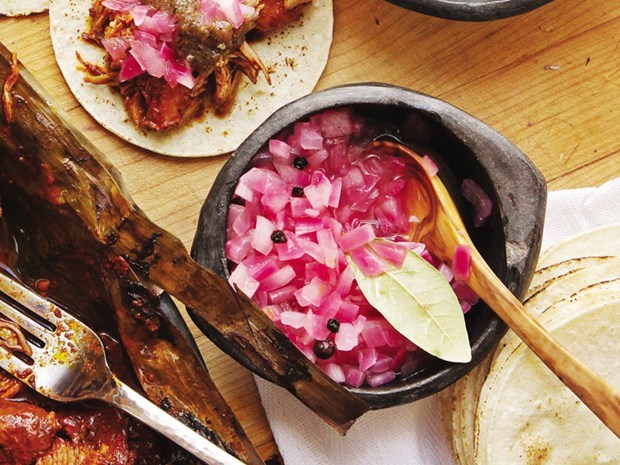
Yucatan sour scallions.
Insects
The
idea of using insects as a source of protein originated long time ago and it
became real in several famous restaurants but just in recent years, it has
become one of new trends and needs. They’ve used insects in pancakes and sold
cleaned insects in food stores. One viral example is the mobile food store
chain Miers’ Wahaca in England, which has been well known by its Mexican street
food now is selling food made from insects.
Chef
Thomasina Jean “Tommi” Miers (born 1976), who won the Master Chefs of BBC
Culinary Channel in 2005, is one of pioneers using insects. He might not know
having those leggy buddies have just become an important culinary trend of 2017
and later.
Writer: Luu Huong/Doanhnhancuoituan
Translator: Thu Pham